
Over the last decade we’ve spent quite a bit of time and energy remodeling mid-century modern homes (MCMs). We admire the original design of these homes and it’s always satisfying to breathe new life into them -allowing them to be useful, inspiring homes for another 50 or 60 years. Remodeling an MCM home differs from remodeling just any old house though. There are a number of differences to understand about MCM homes- characteristics that make them unique. The materials and methods common in the 1950’s were distinctive and relatively consistent. Understanding these materials and methods helps determine the viability of a remodel and allows for a more straight-forward decision making process. Here are a few common characteristics of MCM homes:
![]() The foundations are solid- enough to support a second story addition (when desired), the framing is usually in good shape- which is easy to supplement, and there is quite often pre-existing stone work and other textures- which is desirable to retain during the remodel and would be expensive to replicate on a new home.
The foundations are solid- enough to support a second story addition (when desired), the framing is usually in good shape- which is easy to supplement, and there is quite often pre-existing stone work and other textures- which is desirable to retain during the remodel and would be expensive to replicate on a new home.
![]() Typically, the systems need replacing. The electrical, plumbing and ventilation systems have been working hard for nearly 60 years and it’s time to update them. A typical ‘complaint’ of an MCM client is that some/ all of the systems are simply worn out (read: dripping faucets, commonly tripped circuit breakers, inadequate heat).
Typically, the systems need replacing. The electrical, plumbing and ventilation systems have been working hard for nearly 60 years and it’s time to update them. A typical ‘complaint’ of an MCM client is that some/ all of the systems are simply worn out (read: dripping faucets, commonly tripped circuit breakers, inadequate heat).
![]() The windows are typically single pane and updating them to energy efficient double-pane windows does wonders to keep the heat in, lower the heating bill and solve that drafty problem. Typically, MCM homes simply used “field-built windows”- that is, large inoperable panes of glass stopped-into place with wood trim. So, another bonus of updating the window package is to strategically incorporate more operable windows for proper cross-ventilation, while maintaining that open feel to the outdoors.
The windows are typically single pane and updating them to energy efficient double-pane windows does wonders to keep the heat in, lower the heating bill and solve that drafty problem. Typically, MCM homes simply used “field-built windows”- that is, large inoperable panes of glass stopped-into place with wood trim. So, another bonus of updating the window package is to strategically incorporate more operable windows for proper cross-ventilation, while maintaining that open feel to the outdoors.
![]() There is typically little or no wall insulation and the ceiling insulation is usually well below current standards. Wherever, wall and ceiling cavities are opened up, it’s highly recommended to install new insulation. We’ve developed a series of strategies for bringing the home up to, or near, current insulation values as well as installing a proper vapor barrier while maintaining the crisp MCM lines.
There is typically little or no wall insulation and the ceiling insulation is usually well below current standards. Wherever, wall and ceiling cavities are opened up, it’s highly recommended to install new insulation. We’ve developed a series of strategies for bringing the home up to, or near, current insulation values as well as installing a proper vapor barrier while maintaining the crisp MCM lines.
![]() The original floor plans are usually simple and straight-forward making it effective to move or lose walls depending on the new program. Often times, alterations to the actual plan of the MCM home are subtle, frankly almost invisible when the home is completed, yet the updated design functions and feels much improved. Typically, kitchens are transformed from feeling like large closets for getting the cooking job done, to home’s hub where all family and entertaining activities function through and around.
The original floor plans are usually simple and straight-forward making it effective to move or lose walls depending on the new program. Often times, alterations to the actual plan of the MCM home are subtle, frankly almost invisible when the home is completed, yet the updated design functions and feels much improved. Typically, kitchens are transformed from feeling like large closets for getting the cooking job done, to home’s hub where all family and entertaining activities function through and around.
![]() The original exterior elevations typically involve long horizontal lines with deep overhangs. In many cases the exterior look is attractive to the point of preserving. A few strategies are to improve the amount of natural daylight entering the home, preserve/ enhance existing textures and re-skin the house in an MCM complimentary material like a stained T&G clear cedar siding. We also routinely look for ways to enhance the indoor/ outdoor relationship as well- that is, incorporating large sliding door systems to better connect, and “borrow”, exterior terraces/ garden areas to make the MCM interior feel more spacious (without needing to add expensive, and often, unneeded, interior space).
The original exterior elevations typically involve long horizontal lines with deep overhangs. In many cases the exterior look is attractive to the point of preserving. A few strategies are to improve the amount of natural daylight entering the home, preserve/ enhance existing textures and re-skin the house in an MCM complimentary material like a stained T&G clear cedar siding. We also routinely look for ways to enhance the indoor/ outdoor relationship as well- that is, incorporating large sliding door systems to better connect, and “borrow”, exterior terraces/ garden areas to make the MCM interior feel more spacious (without needing to add expensive, and often, unneeded, interior space).
…and that’s just a few. There are many benefits of MCM homes (pre-existing attributes that are value-adds and improve overall quality) and a few detriments too (such as those listed above), but the most important thing is that, for the most part, these items are predictable. They take many of the variables out of the planning, designing and budgeting. Although each project is different and custom, we’ve been able to develop a reliable process and system for remodeling these homes.
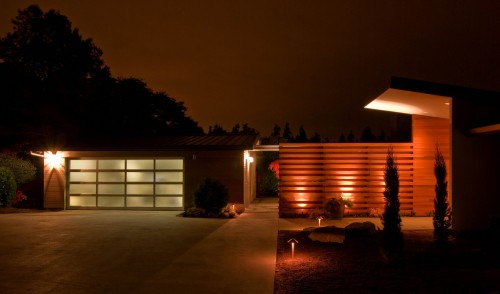
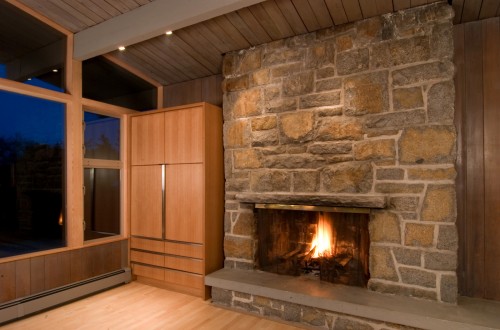
Given that there are effective methods to updating MCM homes and a great deal of knowledge to share on the topic, we thought it would make for a good post. So we’ve organized our process into all the various stages of updating a Mid-Century Modern Home. Although it feels like there are a lot of stages, they tend to seamlessly flow together and have been created to effectively use (and minimize) our client’s valuable time. Here goes:
Assessing the Existing Home
Along with a general walk-through, taking a peak in the attic and crawl space tells us quite a bit about the state of the home. Another important factor is how many times the home has been remodeled in the past. The more “weekend warrior remodels” it’s had over the years, the more it typically costs to remodel –there’s just more to undo. We usually see a lot of kitchens and bathrooms in sore need of updates (from a function and aesthetic standpoint).

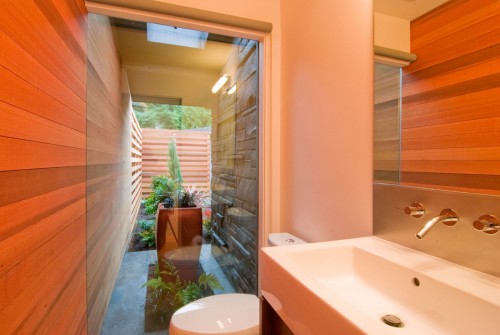
Understanding the Project Goals
This is where talk to the homeowner about how they want to live, what possibilities they want in their future lifestyle, what their budget is, timeline constraints, overall concerns, etc. If we’re all a good fit for one another we move on to the next step. .
And if we’re not a good fit, we can usually recommend someone who is.
Design Proposal
We project how many hours it will take us to complete everything involved with the design package. This includes documenting the existing home, gathering the appropriate information, designing the remodel, submitting and obtaining the building permit and all the other necessary details like initial pricing and scheduling. We determine our design fee and deliver a proposal to the homeowner(s). If it sounds reasonable to them, they sign on the dotted line and we’re off to the races.
City Research
While jurisdictions like the city of Seattle don’t usually have much on file for drawings before the 1980’s, it is worth checking to see what is on file; this could include past permits, property liens, violations and what have you. It’s also a good time to verify any land-use issues like easements, setbacks and unusual conditions. Pre-submittal and pre-permit procedures are researched; for instance, at the time of this post there is a 6 week delay at the City of Seattle just to come in for a permit intake appointment (ridiculous!). This requires some planning and strategy to maintain an efficient schedule.
Community Coordination (if applicable)
Some of these mid-century modern gems reside in older neighborhoods with community covenants (like Innis Arden just north of Seattle for instance). These neighborhoods have design review guidelines to maintain quality in their communities. The process usually requires the architect and/or homeowner to make a presentation to the community board and get approval for the design prior to obtaining the building permit. Our design package includes the presentations and time necessary to meet these requirements.
As-built Documents
As mentioned above, it’s rare that a set of original drawings accompanies an older house. More often than not, we spend several hours on site running around documenting the house and inputting the existing plans and elevations straight into AutoCAD. In addition to providing a set of base drawings for the eventual design, these as-built documents are also a good record of the existing home. This phase on site is also an excellent time to get a feel for the significance of the home and property- how the sunlight reaches the home, possible views, relationship to the immediate site, or the sequence of experiences leading up to the front door and through the home. There may be special features about the home like a stone fireplace, initial relationships between inside and outside or opportunities to capture more daylight. These are sketched up, photographed and documented.
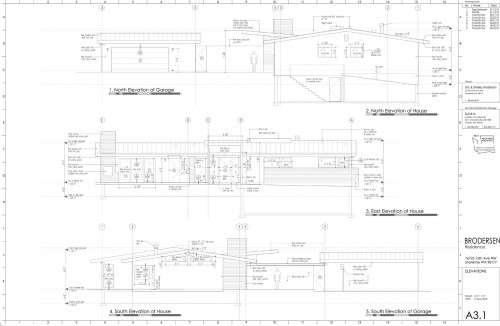
Homeowner questionnaire
We hand out homework with most projects (although it’s optional and very rarely graded). The questionnaire gets the homeowners(s) to think about how they currently live, what they’d like to change about their patterns and hone in on details that are important to incorporate into the new design. It’s also a good time to put the bug in their ear about rounding up all those magazine clippings they’ve been keeping for design ideas.

Workplan
We outline our overall schedule; what will be done and by when. Like all of our documents, this schedule is available to our clients(s). We’re big on transparency.
Schematic Design & Feasibility
A series of diagrams are created based on all of the information previously discussed. These diagrams clarify the most important attributes of the remodel and focus on design concepts. 2-3 architectural schemes are then developed based on the diagram study. Special items about the home are identified and enhanced. Materials and the overall “feel” of the remodel are discussed. This stage incorporates about 2 meetings where the diagrams and schematic drawings are reviewed with the client(s), which help make the first round of design decisions.
We also tend to follow-up with initial budgets for the various design options right up front- although there is much left to choose and design, we typically have enough of an understanding of the client’s goals and can combine this with our past experience to devise an accurate budget. It’s a point of pride around BUILD that we’ll deliver the completed project within 10% of this initial budget.
An overall design strategy is chosen and we move onto Design Development.
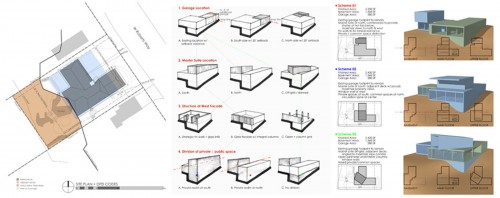

Design Development
As decisions continue to be made, we develop the schematic drawings into permit documents. The graphics evolve from diagrams to actual architecture at this step. The drawings are refined in regards to details and methods. Materials are decided on and, as architects, we figure out how the new work integrates with the existing house. If other consultants are required (like structural engineers) their work is developed and coordinated with the design drawings. Specifications for materials, fixtures/appliances, assembly details, and relevant code information are incorporated into the project. Recommendations from trades, suppliers, and manufacturers are added to the drawing set. The homeowner continues to make decisions at a more specific level of detail- we provide options for every fixture and finish based on our experience. Our clients have the luxury of researching and selecting anything further that is particularly important to them, or alternatively, moving forward with our recommendations if they’re so inclined. Our client’s run the full gamut of this range (from lots of personal research to simply leaving this in our hands to select).

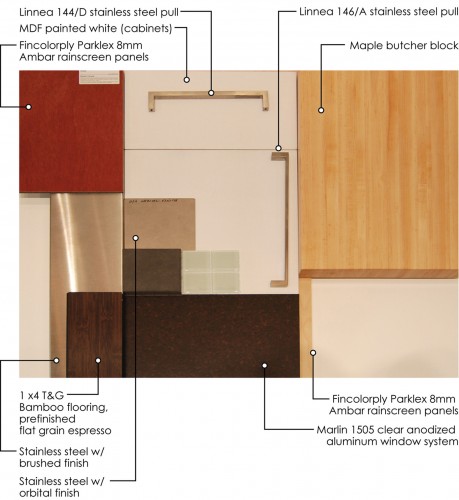
Pricing, scheduling and initial sub-contractor coordination
As a design-build firm we have close relationships with sub-contractors and vendors; we begin coordinating the pricing and scheduling with them early on. We refine the pricing based on the latest round of decisions and update our target budget before we go in for permit.

Permit Submittal
The drawings and documents are submitted to the city for review. Depending on the city, this can take from 3-6 weeks and typically concludes with the city adding any corrections or modifications to the permit set and issuing the permit. The owner(s) writes a check from anywhere between a few hundred to a few thousand dollars for the permit fee and we’re ready to build.
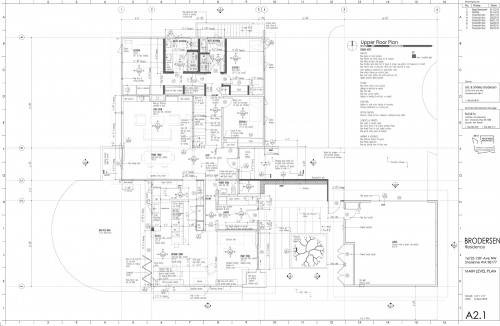
Construction Documents
While the permit set is in for review at the city, we continue to develop the drawings. There are a number of items that the city is concerned with for permit review; these include life-safety issues, site coverage, maximum height information, energy code, etc. These are covered in the permit set submitted to the city. Due to review times and potential delays, we like to get the permit set in early for review and then continue developing the set with regard to items that the city isn’t concerned with. These may include cabinet details, tile selections, appliance specifications, etc. This strategy condenses the schedule and keeps the ball moving. At the end of this phase we have a construction document set ready to build from.
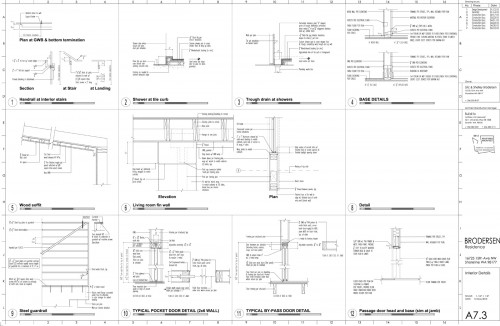
The construction adventure begins
As a design-build firm we’ve got our team, our contractors and our vendors mobilized and ready to go. But that sounds like a future post…
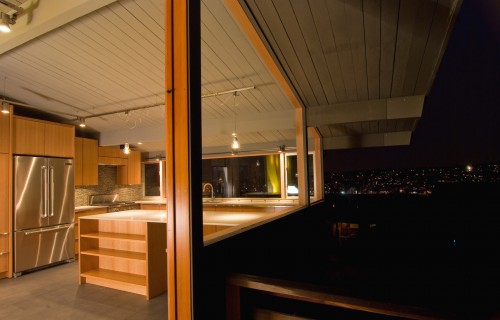
Additional resources
There are several informative posts on remodel to mid-century modern homes:
Innis Arden MCM remodel exterior and interior
Magnolia MCM remodel
Queen Anne MCM remodel
North Seattle MCM kitchen & basement remodel
And a few posts on design strategy with MCM homes:
Check out material purity vs. paint, architecture that multi-tasks, and our sustainability statement.

Cheers from team BUILD
for more design talk, follow us on twitter.





